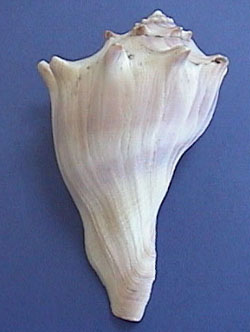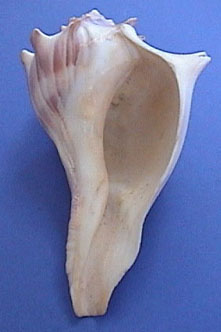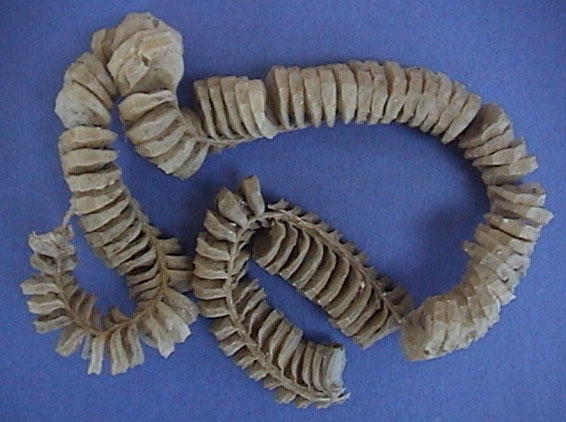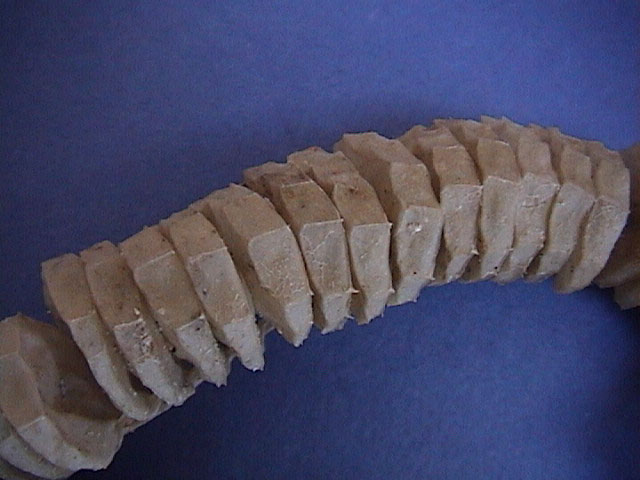|
Knobbed Whelk (Busycon carica)
  SHELL LENGTH: Approximately 8 inches (20.32 cm) |
|
The Knobbed Whelk, Georgia's state shell, is the most
common whelk characterized by the knobs on the spire,
opening on right, and an orange aperture.
Whelks and their egg cases are common on southeastern beaches. Whelks
grow up to 12 inches in length and are pear-shaped with the top being
wide with a short spire. These univalves prey
on bivalves by clasping them with their strong foot
and prying apart the shells using the lip
of their shell. They are also known to eat carrion
and are great shells for Hermit Crabs when they are empty. Whelks can
be used as signal horns and are used for chowders. Their egg cases are
lightweight and are attached in a string like a necklace with each disc
contaning 20-30 eggs or more. The egg case of this species has square
edges (pictured below). Many never hatch because their newly hatched
siblings eat them. Tiny whelks, miniatures of their parents, first hatch
from eggs inside the capsule and then hatch again out of the capsule
by eating their way out. Small holes are visible in each capsule where
they emerged. |
  |